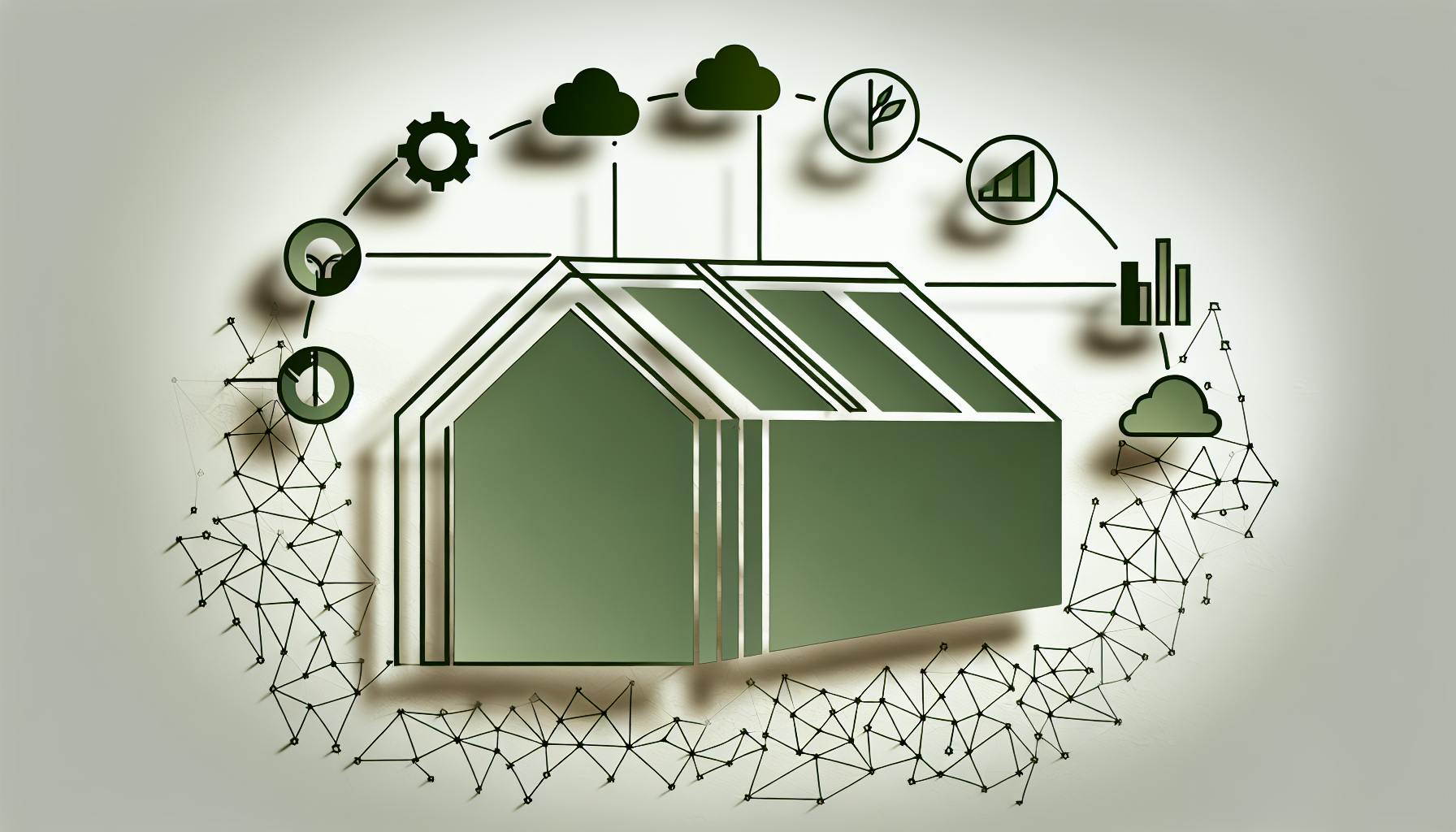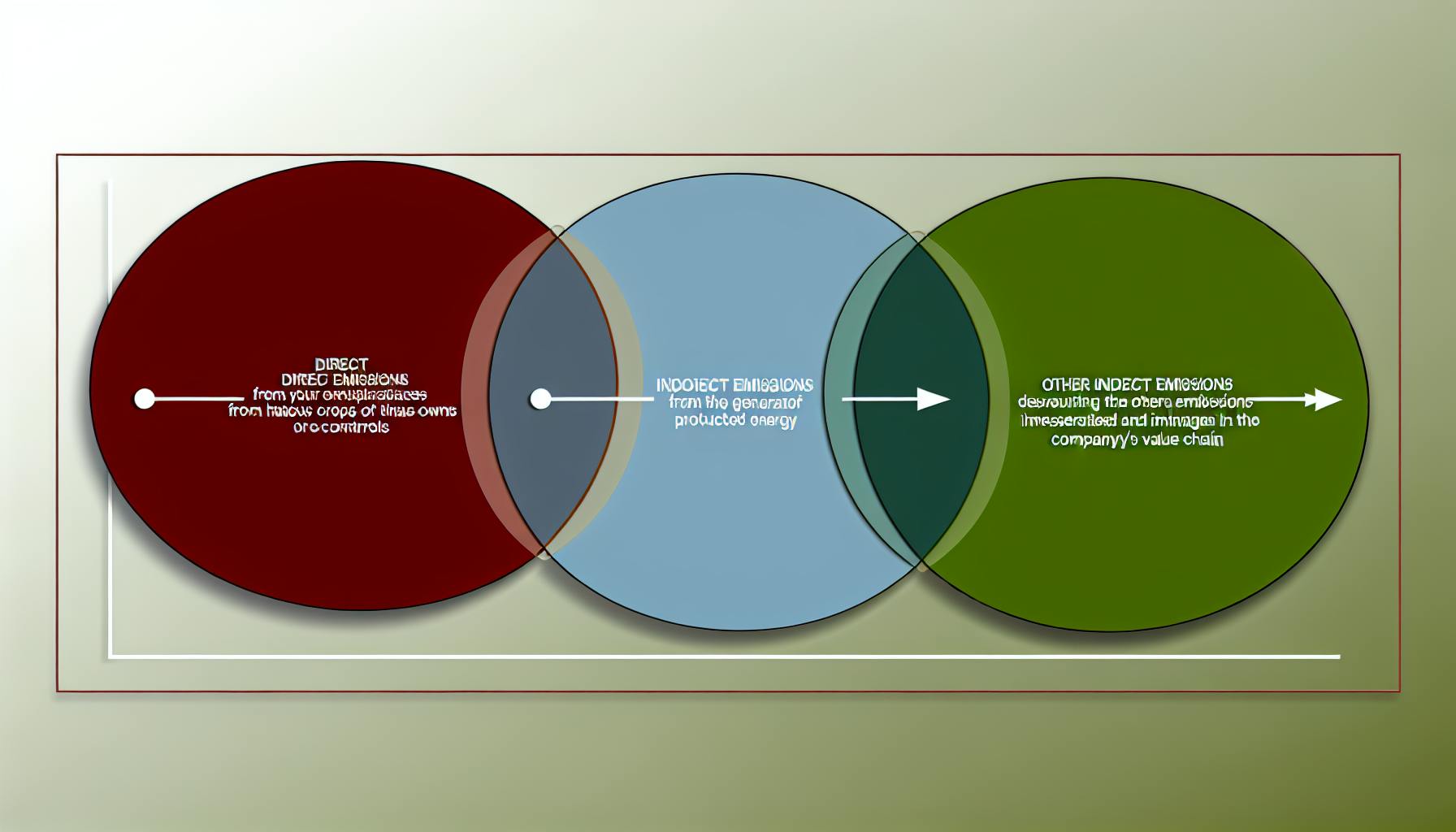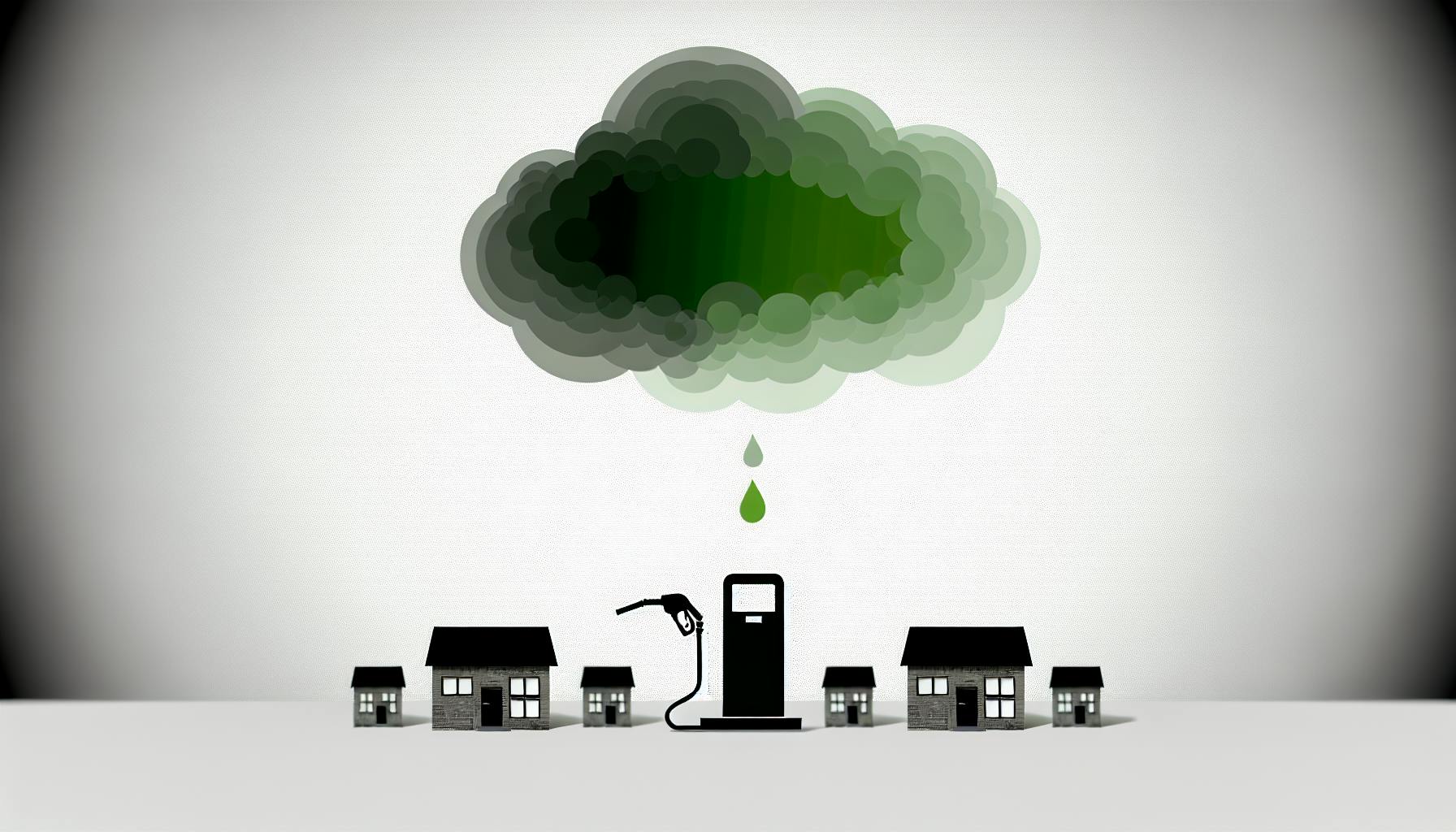GHG emissions reporting can seem daunting for SMEs. With complex regulations and data tracking needs, it's challenging to get started.
But SMEs can simplify and streamline GHG reporting. This guide shows how integrating the right tools makes the process achievable for any small business.
You'll get a comprehensive overview of GHG reporting tailored to SMEs. From key concepts to leveraging SaaS solutions, you'll have the knowledge to master emissions tracking and meet reporting goals.
Why GHG Emissions Reporting Matters for SMEs
GHG emissions reporting is becoming increasingly important for small and medium-sized enterprises (SMEs) for several key reasons:
Regulatory Compliance
Many countries and regions now have mandatory GHG emissions reporting regulations, like the EPA's Greenhouse Gas Reporting Program in the US. Even when not mandated, demonstrating strong sustainability practices can give SMEs a competitive edge. Proactively measuring and reporting GHG emissions ensures SMEs are prepared for current and future compliance requirements.
Stakeholder Demands
There is growing pressure from multiple stakeholders - investors, customers, employees, and the wider community - for companies to take climate action. SMEs that fail to measure, understand, and reduce their carbon footprint risk losing access to capital, market share, talent, and social license to operate over the long run.
Cost Savings and Efficiency
Tracking GHG emissions exposes energy waste and opportunities for efficiency, leading to significant operational cost savings from reductions in energy, materials, logistics, and waste. Streamlining carbon accounting through purpose-built SaaS tools also boosts productivity and frees up resources within SMEs to focus on core operations.
In summary, SMEs stand to gain enormously by embracing GHG emissions measurement and reporting - from risk mitigation and market access to cost and competitive advantages. The time for climate action is now.
What are the 3 scopes in reporting the GHG emissions?
GHG emissions reporting categorizes emissions into three scopes:
Scope 1 Emissions
Scope 1 emissions are direct GHG emissions from sources owned or controlled by the company. This includes:
- Emissions from fuel combustion in boilers, furnaces, vehicles etc.
- Emissions from chemical production activities
- Fugitive emissions from refrigerants or equipment leaks
Scope 2 Emissions
Scope 2 accounts for indirect GHG emissions from purchased electricity consumed by the company. Though the company does not directly emit these GHGs, it indirectly causes these emissions through its electricity usage.
Scope 3 Emissions
Scope 3 emissions are all other indirect emissions from the company's activities occuring from sources it does not own or control. These include:
- Emissions from business travel
- Supply chain emissions
- Use of sold products
Properly identifying all three scopes provides a comprehensive view of a company's carbon footprint. Robust ghg emissions reporting relies on tracking emissions across these scopes as per standards like the Greenhouse Gas Protocol. EcoHedge's software can simplify this tracking process for SMEs through automated data collection, calculations, and visual reporting.
What is the reporting threshold for GHG emissions?
The reporting threshold under the greenhouse gas (GHG) reporting requirements is 10 kilotonnes (kt) of carbon dioxide equivalent (CO2 eq). A facility is subject to the reporting requirements if its total annual emissions of ghg emissions reporting meet or exceed the reporting threshold.
To determine if your SME meets the threshold, you'll need to calculate your total GHG emissions for the year across all scopes and convert them to CO2 equivalent. This includes:
- Scope 1 emissions from sources directly owned or controlled by the company like boilers, vehicles, etc.
- Scope 2 emissions from purchased electricity used by the company
- Scope 3 emissions from business travel, waste disposal, etc.
Once you have the total emissions figure, compare it against the 10 kt CO2eq threshold. If your SME's emissions are below 10 kt per year, you do not need to report under the EPA GHG reporting regulations currently. However, it is still useful to measure and track emissions yearly as regulations may change or your company emissions may increase over time.
Some key things to remember around the reporting threshold:
- The threshold is based on total, company-wide emissions, not facility-level emissions
- The EPA lowers the threshold over time - it started at 25 kt CO2eq in 2011
- Individual states often have different and lower reporting thresholds
So even if you are not required to report currently, it pays to be prepared by measuring emissions accurately. This allows you to identify reduction opportunities and be ready to comply proactively if regulations change.
What is a GHG emission statement?
The GHG emission statement provides key information about a company's greenhouse gas emissions over a specified time period, usually annually.
It quantifies the company's carbon footprint across different emission sources and categories as defined by recognized reporting protocols like the Greenhouse Gas Protocol. Key elements in a GHG statement include:
-
Total gross emissions produced from various scopes such as energy usage, transportation, waste generation etc.
-
Breakdown of emissions by scope - Scope 1 for direct emissions, Scope 2 accounting for purchased energy/heat/steam and Scope 3 for other indirect emissions
-
Emissions reduction progress against internal goals or external benchmarks
-
Methodologies and emission factors used to arrive at the final numbers
The statement allows investors and stakeholders to assess environmental risks, reduction strategies and performance trends. By reporting GHG emissions transparently, companies demonstrate accountability, compliance and leadership on climate action.
What is GHG report as per ISO 14064?
ISO 14064 is an international standard that provides guidance for organizations to quantify and report their greenhouse gas (GHG) emissions.
Key aspects of ISO 14064 GHG reporting standard
-
Part 1 outlines principles and requirements for developing organizational-level GHG inventories. It helps ensure consistent and transparent emissions accounting and reporting.
-
Part 2 specifies principles and requirements for quantifying, monitoring, and reporting GHG reductions and removal enhancements from projects and activities.
-
Part 3 covers verification and validation principles for GHG inventories and projects. It describes the process of checking reported GHG emissions data and information to ensure quality and adherence to ISO 14064 principles.
Adhering to ISO 14064 for GHG emissions reporting demonstrates an organization's commitment to accurate, consistent, and transparent emissions accounting. It also facilitates benchmarking and comparison across companies and sectors. Many GHG reporting programs reference ISO 14064 as an underlying standard.
sbb-itb-919600f
Deciphering GHG Emissions Reporting Landscape
The world of greenhouse gas (GHG) emissions reporting can seem daunting for small and medium-sized enterprises (SMEs). With varying regulations across different jurisdictions, numerous reporting protocols, and complex data calculations, making sense of it all is no easy feat. This guide aims to decode key aspects of the GHG reporting landscape to help SMEs master this crucial area.
Navigating the EPA GHG Reporting Program
The EPA GHG Reporting Program (GHGRP) is currently a mandatory reporting system for major industrial GHG emission sources in the United States. Facilities that emit over 25,000 metric tons of CO2 equivalent per year must measure and report annual emissions data to the EPA.
While most SMEs may fall under the reporting threshold, understanding program specifics can still provide value:
- Reporting deadlines - Reports must be submitted by March 31st for previous year emissions. This schedule allows time for third-party verification.
- Emissions calculation methods - The GHGRP provides detailed guidance on calculation methodologies, emissions factors, and measurement techniques. These can serve as a model for voluntary reporting.
- Reporting templates and tools - From user guides to emissions calculation spreadsheets, the GHGRP offers helpful resources SMEs can leverage for their own tracking and reporting.
Aligning measurement approaches with the GHGRP methodology can bolster an SME's reporting rigor and accuracy.
Complying with Greenhouse Gas Reporting Regulations
Beyond the EPA's program, SMEs must be aware of other GHG reporting regulations that may apply based on their jurisdiction:
- The UK mandates GHG reporting for companies under the Streamlined Energy and Carbon Reporting framework.
- In Canada, large emitters face federal GHG emissions reporting obligations. Several provinces also have provincial-level regulations.
- The EU Emissions Trading System (EU ETS) requires emissions monitoring, reporting, and verification for factories, power plants, and airlines.
Understanding requirements that target your sector locally allows proper compliance. Failing to report emissions when obligated can lead to heavy fines.
GHG reporting protocols and standards like The Climate Registry or CDP provide supplemental frameworks for voluntary disclosure. Adoption signals proactive climate action to stakeholders.
Adopting the GHG Reporting Protocol for SMEs
The GHG Protocol establishes comprehensive global standardized frameworks to measure and manage GHG emissions from private and public sector operations.
The Corporate Accounting and Reporting Standard outlines:
- Emissions Scopes 1, 2 & 3
- Boundary setting approaches
- Calculation methodologies
It aims to help companies prepare a true and fair GHG emissions inventory.
As the world's most widely used accounting tool, the GHG Protocol provides a blueprint for SMEs to build out robust quantification and reporting processes aligned with international best practices.
Careful navigation of the various emissions regulations and protocols is key to developing a successful GHG reporting approach. Investing time to understand landscape specifics better positions SMEs for accurate tracking, fruitful stakeholder disclosures, emissions reductions goal-setting, and recognition as sustainability leaders.
Calculating Your Emissions: Key Data Sources and Methodologies
Greenhouse gas (GHG) emissions reporting can seem daunting for small and medium-sized enterprises (SMEs). However, with the right tools and methodologies, calculating your company's carbon footprint can be straightforward.
Leveraging SaaS Tools to Track Key Data Sources
Using a software-as-a-service (SaaS) solution like EcoHedge to track emissions simplifies collecting the necessary data. The software can seamlessly pull information on:
- Energy usage: Electricity, natural gas, and other energy consumption.
- Fuel consumption: Gasoline, diesel, propane used in company vehicles and equipment.
- Refrigerants and chemicals: Types and amounts of refrigerants and industrial gases.
EcoHedge automates tracking these direct emissions sources and more to calculate your scope 1 emissions. The intuitive dashboards give you real-time visibility into your carbon footprint from various operations.
Applying Accurate Emission Factors and EPA Guidelines
Once the raw data is collected, appropriately applying emissions factors is key to accurately determining your GHG emissions. Emission factors provide GHG emission rates per unit of activity and vary based on:
- Source type: Electricity, fuel oil, natural gas etc. Each has a different factor.
- Geographic location: Factors differ across regions based on energy generation methods and grid mixes.
EcoHedge includes the latest emissions factors from reputable sources like the EPA and IPCC by default. This takes the complexity out of choosing and applying the right factors.
The software also ensures your inventory and reports comply with EPA's GHG reporting program (GHGRP) guidelines.
Understanding Scopes for Comprehensive GHG Reporting
To fully account for emissions, SMEs must track:
- Scope 1: Direct emissions from owned/controlled sources like vehicles and equipment.
- Scope 2: Indirect emissions from purchased electricity and heating.
- Scope 3: All other indirect emissions from business activities like employee travel, procurement etc.
While regulations focus mostly on scope 1 and 2 emissions, EcoHedge measures your entire footprint including relevant scope 3 emissions based on your operations. This provides full visibility into your carbon impact so your business can develop reduction strategies across all scopes in order to meet net zero commitments.
With the right tools taking care of emissions calculations and reporting complexities, SMEs can efficiently track their GHG footprint and make progress on their sustainability goals. The automated data collection and accurate carbon accounting methodologies these solutions provide deliver the insight companies need to engage meaningfully with stakeholders on their climate impact and strategy.
Streamlining GHG Emissions Reporting with Integrated SaaS Solutions
With growing stakeholder interest and regulatory requirements around sustainability, measuring and reporting greenhouse gas (GHG) emissions has become a critical priority for many small and medium-sized enterprises (SMEs). However, the process can be complex, requiring extensive data collection and calculations based on methodologies like the Greenhouse Gas Protocol. This is where integrated GHG emissions reporting software can help.
SaaS solutions designed specifically for emissions tracking and reporting offer automation, customization, and analytics capabilities that simplify the entire process for SMEs. Instead of struggling with manual data entry in spreadsheets, companies can leverage these tools to streamline GHG accounting, save time and resources, and effectively communicate their sustainability efforts.
Automating Data Collection and Management
Rather than tracking various data points in siloed spreadsheets, integrated software consolidates all GHG emissions data points into a centralized database. This enables automatic data collection from sources like utility bills, fleet telemetry, supply chain records, and more based on user-defined schedules.
Dashboards provide real-time visibility into emissions from various scopes and categories. Built-in calculation tools instantly update totals as new data enters the system. This eliminates reliance on complex manual calculations in error-prone spreadsheets. With automated data aggregation, companies can efficiently monitor the carbon footprint of facilities, travel, procurement, and all other sources.
Custom Emissions Calculations and Modeling
While some SaaS solutions offer pre-built emissions factors and calculations, the most robust tools allow customization to match a company's unique assets and methodologies. Users can configure emissions factors and GWP values tailored specifically to their operations and industry.
With flexible modelling capabilities, companies can streamline calculations of product and value chain emissions as per GHG Protocol scope 3 guidance. Users can set up emissions calculations to perfectly fit their existing business processes rather than overhauling procedures to match the software.
Centralized Reporting and Analytics for GHG Emissions
Once the centralized database populates with historical and current emissions data, integrated reporting dashboards make it simple to analyze trends and performance. Users can generate annual reports, charts and visuals that illustrate their carbon footprint over time or by source.
These user-friendly analytics empower sustainability teams to identify "hot spots" of high emissions and quickly evaluate reduction opportunities. Software integrations also enable seamless emissions data sharing with stakeholders like investors, customers or supply chain partners. Rather than sifting through spreadsheets, companies can showcase customized interactive reports that demonstrate their commitment to climate action.
With the right SaaS solution in place to eliminate manual processes, SMEs can transform GHG reporting from a burden into a strategic advantage that keeps stakeholders satisfied. Streamlining data collection, customizing methodologies and accessing real-time analytics are key to mastering complex emissions accounting. Integrated software solutions ultimately facilitate transparency, performance improvements, and effective sustainability communications.
Effective Internal and External Emissions Reporting
Best practices for reporting emissions data to both internal and external stakeholders.
Setting a Baseline for Goals and Targets
Leverage initial GHG inventory to establish emission reduction objectives.
Reporting greenhouse gas (GHG) emissions is a critical first step for SMEs aiming to reduce their carbon footprint. Conducting an initial GHG emissions inventory allows companies to:
- Understand their largest sources of emissions across Scopes 1, 2, and 3
- Identify "low-hanging fruit" areas ripe for emissions reductions
- Establish a baseline to set science-based targets aligned with net-zero goals
- Track performance over time to evaluate the impact of sustainability initiatives
For example, an initial GHG inventory may reveal that purchased goods account for over 50% of an SME's emissions. The company could then set a goal to reduce supply chain emissions 15% by 2025.
Having a robust methodology grounded in GHG Protocol standards builds credibility with both internal and external stakeholders. Leveraging user-friendly SaaS tools like EcoHedge Lifecycle simplifies the inventory process by automating data collection and providing customized reporting.
Overall, a foundational GHG inventory empowers SMEs to set ambitious climate action plans aligned with global net-zero trajectories.
Ongoing Tracking Towards Goals
Monitor performance vs targets and adjust business practices accordingly.
Once an SME has established their baseline emissions and reduction targets, ongoing tracking and performance monitoring is essential. As the saying goes: "What gets measured gets managed."
Regular GHG reporting such as quarterly or annually allows companies to:
- Gauge progress towards existing science-based targets
- Identify any new "hot spots" of emissions to address
- Assess effectiveness of current reduction initiatives
- Adjust business practices based on the latest emissions data trends
For example, a company may set a target to reduce Scope 2 emissions from purchased electricity 30% by 2030. Upon reviewing their annual GHG inventory, they may find they have only achieved a 10% reduction based on current efforts. This insights empowers them to explore additional energy efficiency measures or renewable energy procurement options to get back on track towards the 2030 goal.
Streamlining data collection with automated software ensures GHG inventories accurately reflect evolving business operations over time. Dashboards make it easy to visualize progress towards targets at a glance.
Overall, embedding consistent GHG monitoring mechanisms fosters a culture of accountability, transparency, and data-driven decision making on the path to net zero.
Communicating Sustainability Achievements
Produce investor-grade reports for shareholders, customers etc.
Once equipped with reliable GHG emissions data tied to reduction goals, SMEs can confidently communicate their sustainability progress to key external stakeholders:
Investors: Demonstrate commitment to environmental stewardship by disclosing GHG inventory methodology and results in shareholder reports and calls. This builds trust by getting ahead of impending regulatory disclosure requirements.
Customers: Feature GHG reduction accomplishments in customer case studies and product marketing materials. Tout environmental benefits alongside cost savings and quality improvements.
Industry: Contribute company emissions data to industry-level climate initiatives aiming to decarbonize entire value chains. Join trade associations providing GHG reporting guidance specific to your sector.
Policymakers: Provide feedback on proposed local, national and international climate policies based on real-world emissions data from your operations. Support regulations aligned with climate science.
For credible reporting, SMEs should adhere to accepted standards like the GHG Protocol Corporate Accounting and Reporting Standard which aligns with SEC guidance. Leveraging third-party verification can also strengthen credibility for public communications.
Ultimately, transparency around GHG monitoring and reductions demonstrates to all stakeholders that sustainability is embedded in everyday business decisions – a key advantage in an increasingly climate-focused marketplace.
Navigating EPA Greenhouse Gas Regulations and Reporting
Meeting EPA greenhouse gas regulations and accurately reporting emissions data can be a complex and tedious process for SMEs. However, with the right tools and guidance, it is possible to streamline compliance while clearly demonstrating your commitment to sustainability.
Understanding the EPA GHG Reporting Program
The EPA's Greenhouse Gas Reporting Program (GHGRP) mandates facilities and suppliers across various industry sectors to track and report their annual greenhouse gas (GHG) emissions if they meet certain emission thresholds. Knowing whether your business falls under the GHGRP scope is the first step.
The GHGRP aims to provide high-quality and consistent data on GHG emissions which can guide future climate policy decisions. Reporting entities must submit emissions data and other relevant information to the EPA following a standard process.
Key Challenges with Emissions Reporting
Though the goals behind GHG regulations are valid, SMEs often grapple with several pain points during reporting:
- Determining organizational boundaries and emissions sources that need tracking
- Collecting extensive activity data across all scopes and converting them to emission figures
- Managing numerous data requests from various stakeholders
- Ensuring consistent methodology and reliable data year after year
- Lacking expertise internally to handle the end-to-end reporting
Without adequate resources or tools, the reporting process can become resource-intensive and open to errors.
How Automated Software Can Help
SMEs can leverage GHG emissions reporting software to automate data collection, calculations, visualizations, and submission to EPA and other disclosure platforms. Such tools can:
- Identify emissions sources: Map all direct and indirect emissions across Scope 1, 2, and 3.
- Sync data seamlessly: Connect to existing data sources via API to collect activity data.
- Calculate emissions: Apply accurate emission factors and GWP values automatically.
- Data quality checks: Ensure accurate and consistent calculations year-over-year.
- Create custom reports: Build reports tailored to various stakeholder needs.
- Regulatory compliance made easy: Tools ensure alignment with GHG Protocol and regulatory requirements.
Adding Value via Reporting
More than just a compliance obligation, SMEs can unlock additional value from emissions reporting:
- Inform emission reduction strategies
- Attract ESG-focused investors
- Meet customer expectations
- Unlock green financing opportunities
- Benchmark sustainability performance
By viewing reporting as a means to drive climate action rather than a burden, SMEs can get ahead of the curve. The right tools make navigating complex GHG regulations much smoother.
Conclusion: Streamlining GHG Reporting for SME Success
GHG emissions reporting can be complex, but it is an essential component of sustainable growth for SMEs. Key takeaways:
-
Regulations like EPA's GHGRP create reporting requirements that apply to many SMEs. Understanding the specifics helps ensure legal compliance.
-
Using established methodologies like the GHG Protocol provides standardized frameworks for calculating emissions across scopes 1, 2, and 3. This enables accurate tracking and benchmarking.
-
SaaS tools like EcoHedge's automated carbon accounting solutions simplify the entire reporting process. By seamlessly integrating emissions data collection, analysis features, and visualization dashboards, they save SMEs time and resources.
Accurate and transparent emissions data is crucial for SMEs on the path to net zero. Streamlined GHG reporting software ensures this data visibility, while freeing up capacity for actual sustainability initiatives and stakeholder engagement. With the right solutions in place, SMEs can focus on their core business as they progress on their critical decarbonization journey.



.png)


